Who is Artist Anish Kapoor?
British and Indian sculptor Anish Kapoor is well-known for his extensive pieces that frequently delve into ideas of perception, space, and the sublime. Born in Bombay (now Mumbai), India, on March 12, 1954, Kapoor relocated to London in the early 1970s to pursue her studies in art before rising to prominence in contemporary sculpture and art.
Despite being a mixed-heritage artist, Kapoor’s Indian ancestry is nevertheless tricky to see in his work. Because of the philosophical foundations of his work, viewers are frequently prompted to reevaluate their perceptions of reality and contemplate the mysteries of existence by his sculptures.
What’s So Special About Anish Kapoor Sculptures
Anish Kapoor sculptures have been the subject of much discussion for the last two to three decades after his giant sculptures created an aura and indulgence in the art world, and he is currently regarded as one of the most significant sculptors of our time. Kapoor never stops working; sculptures often feature geometric shapes, reflective surfaces, and intense colours, and he always overwhelms the crowd.
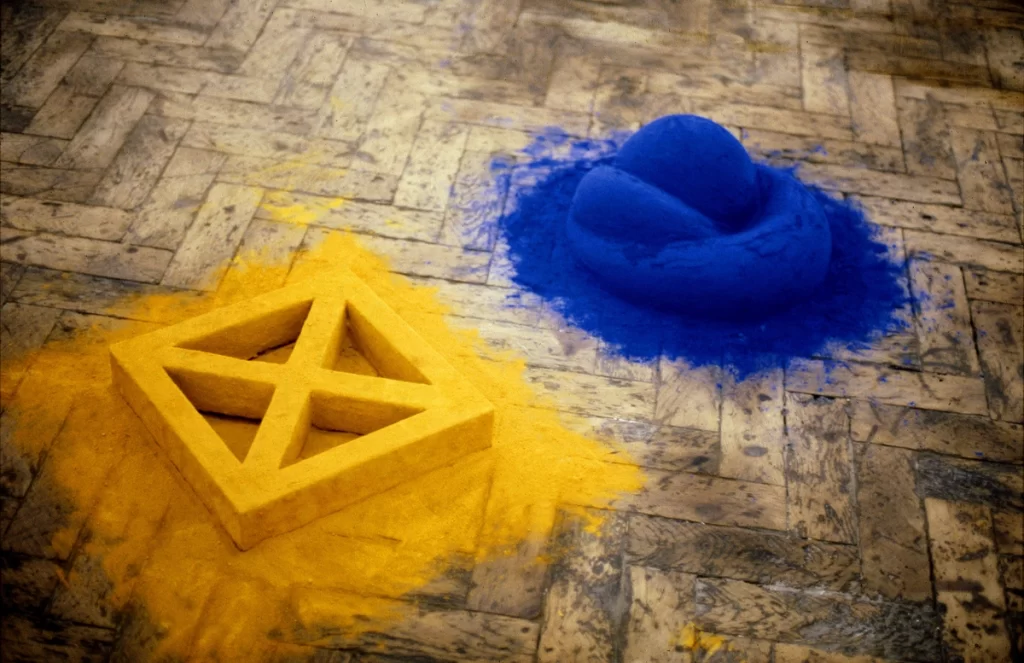
Courtesy – Anish Kapoor
Artist Anish Kapoor’s intentional use of colour and materials reflects his long-standing interest in the limits of the artwork. Colour pigments spilt over the geometric bodies of mixed-media sculptures in early pieces like 1000 Names (1980) and White Sand, Red Millet, and Many Flowers (1982), erasing and dissolving the boundaries of geometric shapes. The Indian sculptor is significant because he brought lyrical, allegory, and primal heat to sculpture, transforming the melancholy, intellectual, and minimalist approach. Things overflow from their boundaries, implying an overabundance of feeling, but they also stand calmly in contemplative focus for ritual.
Anish Kapoor’s sculptures are usually abstract, with reflective surfaces, making his goal of encouraging introspection especially clear. Instead of imposing a predetermined concept on others, he wants to foster an atmosphere where they can think about meaning for themselves. Each contemporary sculpture speaks of the limited individuality of a single body and the vast inclusion of a familiar location as the observer becomes part of the piece. Anish Kapoor’s artwork conveys the soft warmth of a close pregnant belly and untouchable far-off worlds, making it both celestial and earthly. Strangely, his sculptures blend sensuous ordinary experience with profound philosophy.
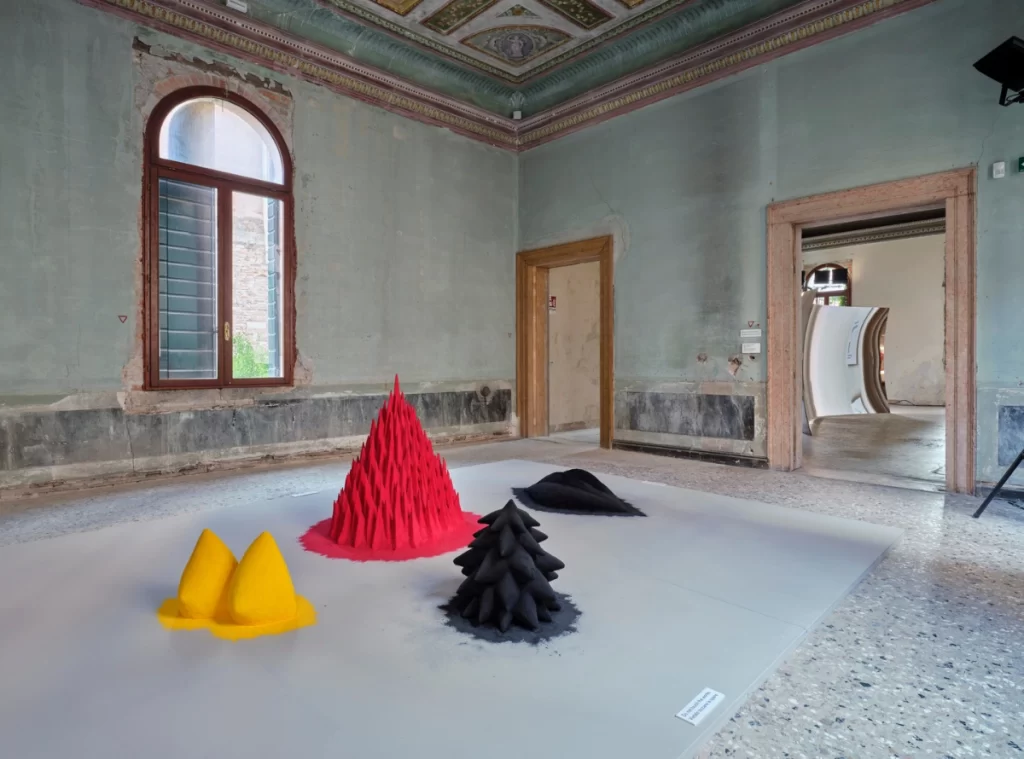
Courtesy – Lisson Gallery
Viewers are encouraged to investigate the connection between perception and space through Kapoor’s use of geometric forms, voids, and reflective surfaces. His modern sculptures frequently experiment with optical illusions, producing confusing spatial perceptions that defy accepted ways of seeing and comprehending. His creations arouse feelings of the sublime, an aesthetic term for feelings of transcendence, amazement, and awe in the face of immensity or infinite. The vast scale, immersive settings, rich colours, and materials used in Anish Kapoor’s artwork evoke strong emotional and psychological reactions in spectators.
Kapoor’s contemporary sculptures commonly embody dualities and paradoxes like presence and absence, firmness and fluidity, or inner and exterior. It depicts the intricacies of life and the interaction between opposites by these paradoxical components. A few of Kapoor’s modern sculptures examine identity and the self, focusing on the body, spirituality, and cultural history. His sculptures frequently elicit analogies and physical experiences, pushing spectators to consider their physical presence and existential circumstances.
Cloud Gate (2006)
Known as “The Bean,” Cloud Gate (2006) is arguably the most well-known contemporary sculpture by Kapoor. Situated in Chicago’s Millennium Park, this sculpture features a seamless, highly reflective stainless steel surface reflecting the surrounding landscape and the city skyline, allowing viewers to interact uniquely. Its size and captivating surface, which resembles liquid mercury, may contribute to its widespread fame. With the general use of mobile cameras and the resulting ‘ selfie’ culture, taking pictures of one’s distorted reflection has become a popular tourist rite growing exponentially.
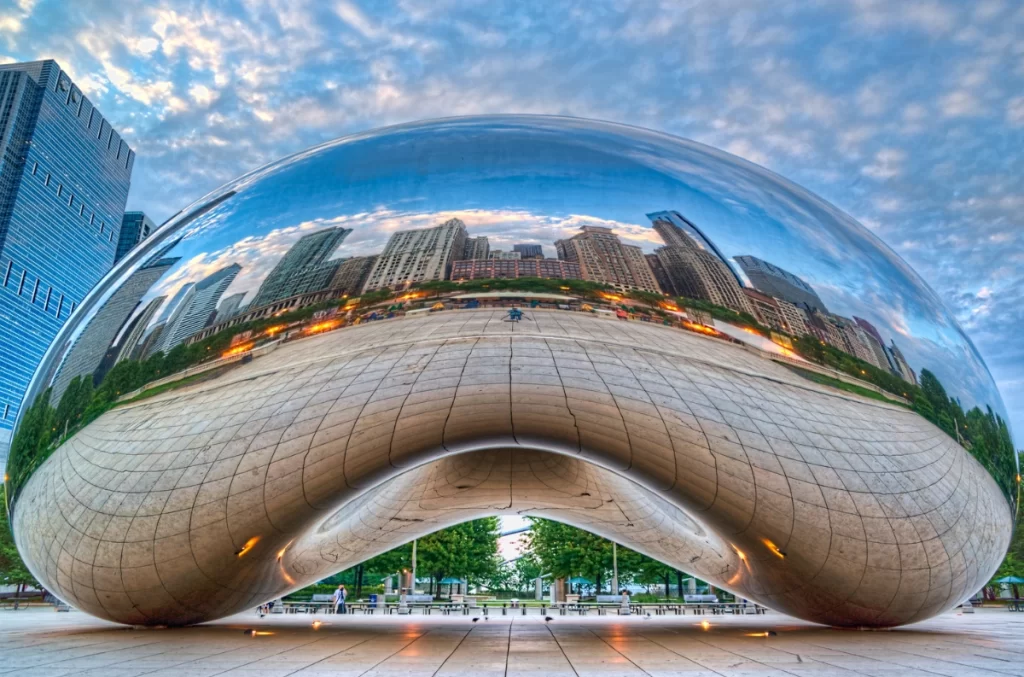
Courtesy – Anirban Ray
The success of Cloud Gate is described as both an artistic achievement and a victorious emblem of urban life in an article by Owen Duffy titled ‘Anish Kapoor’s Cloud Gate: Decentering the World‘. Cloud Gate is a modern landmark that has come to represent Chicago. For Duffy, it is a long-standing political critique of hierarchy and binaries—the hierarchies and binaries that gave rise to Dirty Corner’s vandalism—maintained by Cloud Gate. In particular, Cloud Gate fits into a continuum started earlier by Turning the World Upside Down III (1995) and other mirrored Anish Kapoor sculptures.
Scholars claim that Cloud Gate is an essential and well-known piece of art that refutes static conceptions of the world. It is also the largest and most stunning of Kapoor’s mirrored pieces. Their reflections enter the mirror plane as we watch the cloud gate close, its surface enticing, metallic, and nearly liquid, and they move and veer with the sculpture’s shape.
Leviathan (2011)
Leviathan is a gigantic inflatable sculpture made for the Grand Palais in Paris, occupying the entire Nave of the old structure. It is a massive, amorphous blob suspended from the ceiling that changes size and shape and defies the viewer’s sense of proportion and space. Kapoor created a massive inflated structure named after the biblical beast Leviathan in neoclassical and art nouveau architecture.
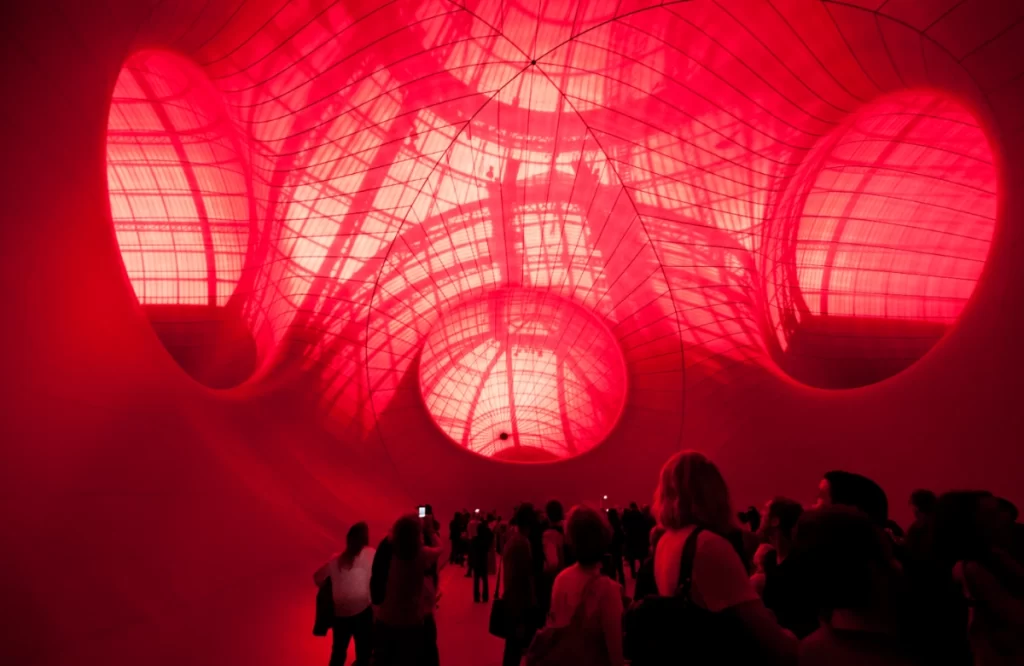
Courtesy – Metalocus
Nearly the whole 13,500 square meter nave of the Grand Palais, initially constructed for the 1900 Universal Exposition, is overrun by Leviathan. First, the visitor can explore the work’s interior, which gives the impression of being within a living thing—a little intruder within an animal’s body. The unique polyvinyl (PVC) used to form the molecular shape offers a transparency that brightens the inside with a brilliant red hue. From this vantage point, it is immediately evident to the spectator how seamlessly Anish Kapoor sculptures and the 19th-century architectural style are integrated.
Other Major Anish Kapoor Sculptures
ArcelorMittal Orbit (2012), a soaring sculpture at Queen Elizabeth Olympic Park, was finished in time for the London 2012 Olympics. Designed by artist Anish Kapoor in partnership with structural engineer Cecil Balmond, it is the highest sculpture in the United Kingdom, and its viewing platforms provide sweeping views of the metropolis.
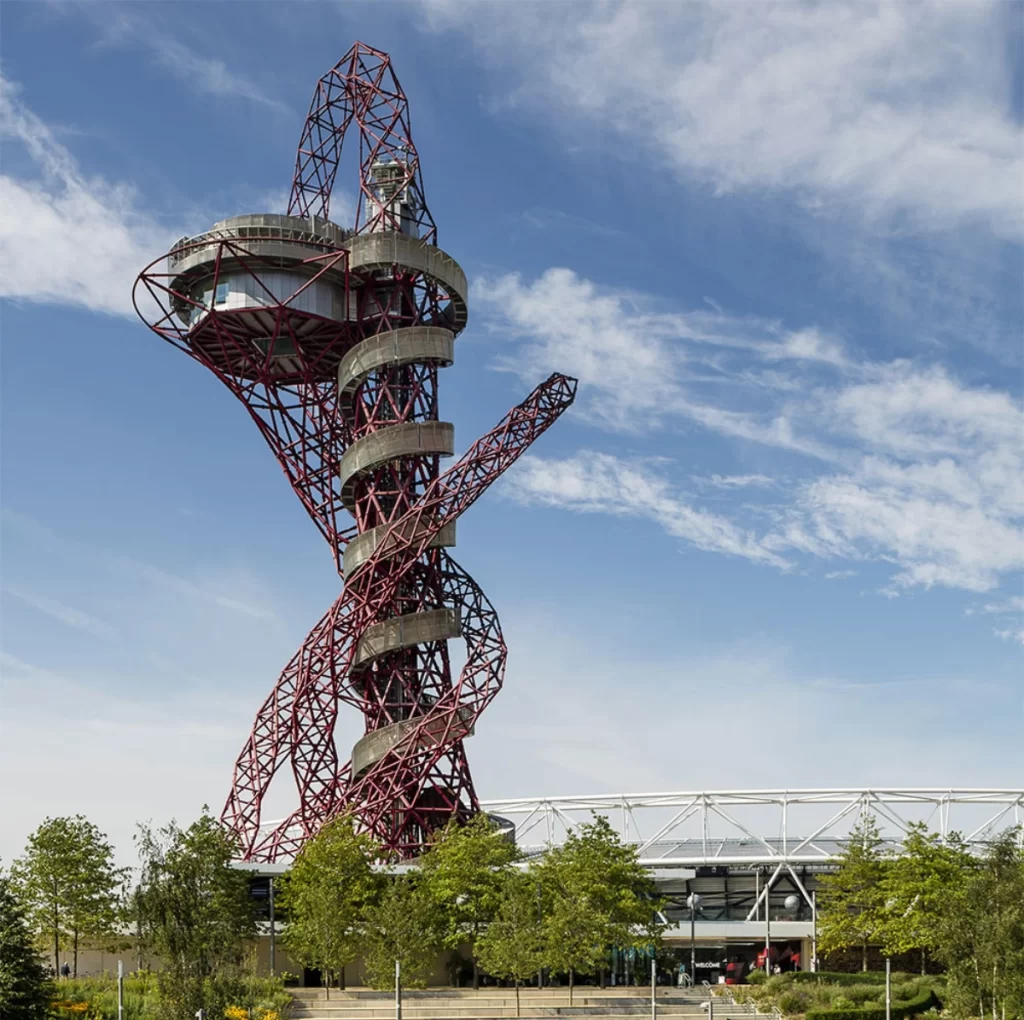
Courtesy – ArcelorMittal Orbit
Marsyas (2002) was a large sculpture that was a part of the Unilever Series at Tate Modern in London, and it was placed in the Turbine Hall. Marsyas, named after a mythological person, comprises three giant steel rings joined by a PVC membrane to produce a massive trumpet-like structure that fills the gallery area.
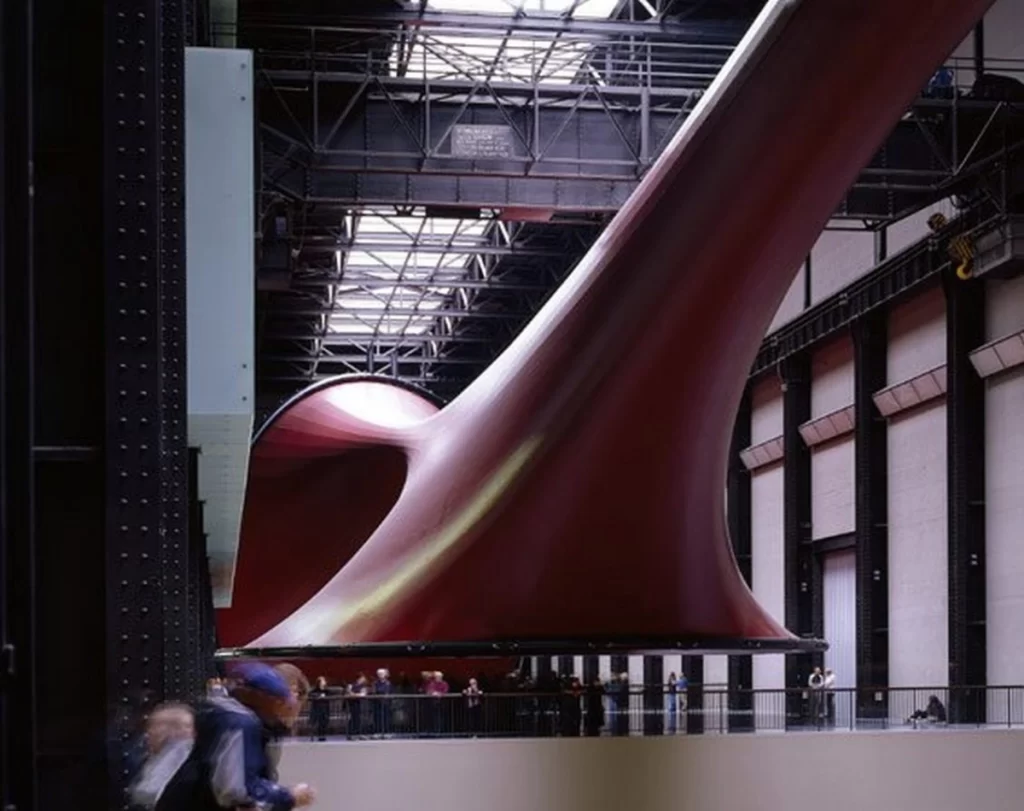
Courtesy – Rethinking The Future
Descension (2014) was an installation featuring a water vortex constantly spiralling downward. Kapoor has shown descension in several countries, with each presentation customizing the piece to the local setting and surroundings.
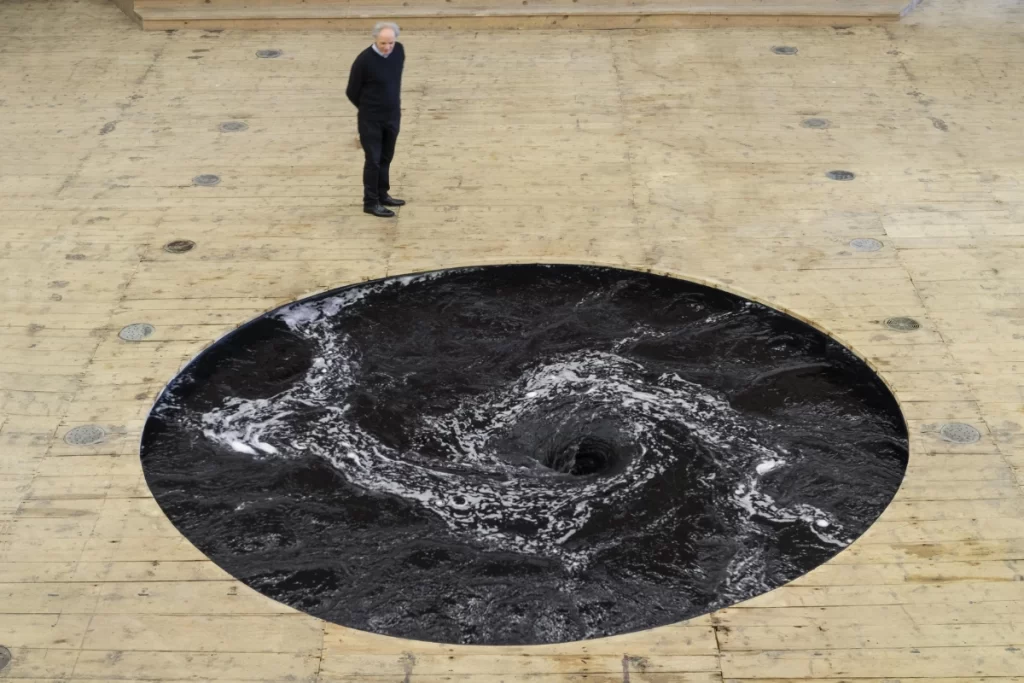
Courtesy – Public Delivery
Several Sky Mirror installations, made by Sky Mirror (1997-2016), feature giant concave stainless steel mirrors positioned outdoors. By reflecting the sky and the surrounding terrain, these mirrors provide captivating optical effects that conflate the sky and the earth.
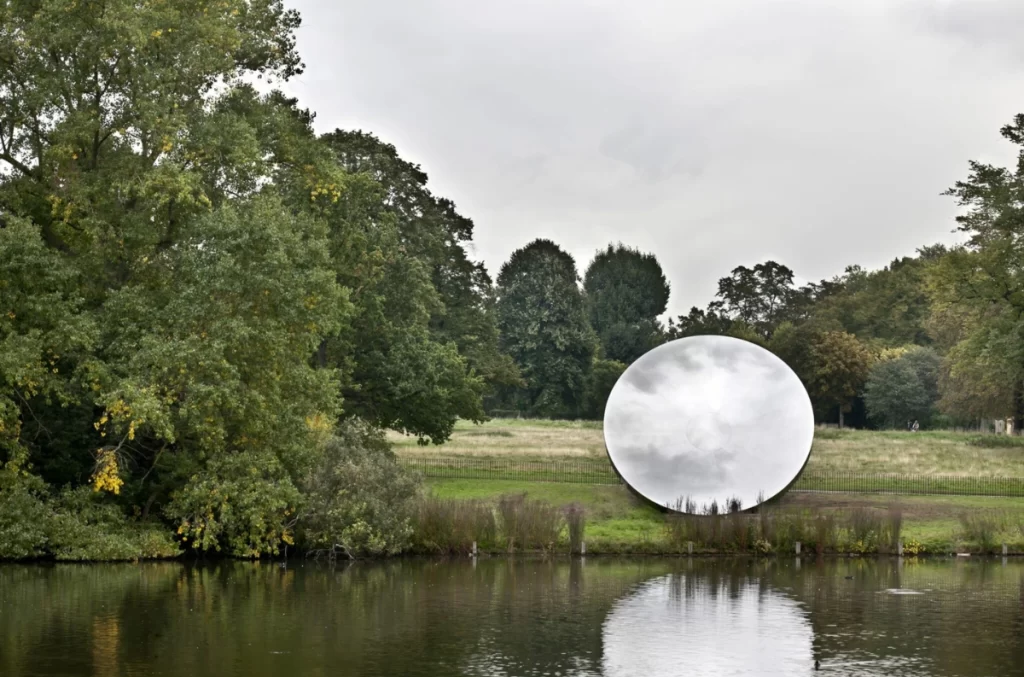
Courtesy – Serpentine Galleries
In Void (1989), artist Anish Kapoor covers a gallery area with many darkly pigmented, shallow circular floor depressions. The piece asks spectators to consider concepts of presence and absence and the interaction between the body and space.
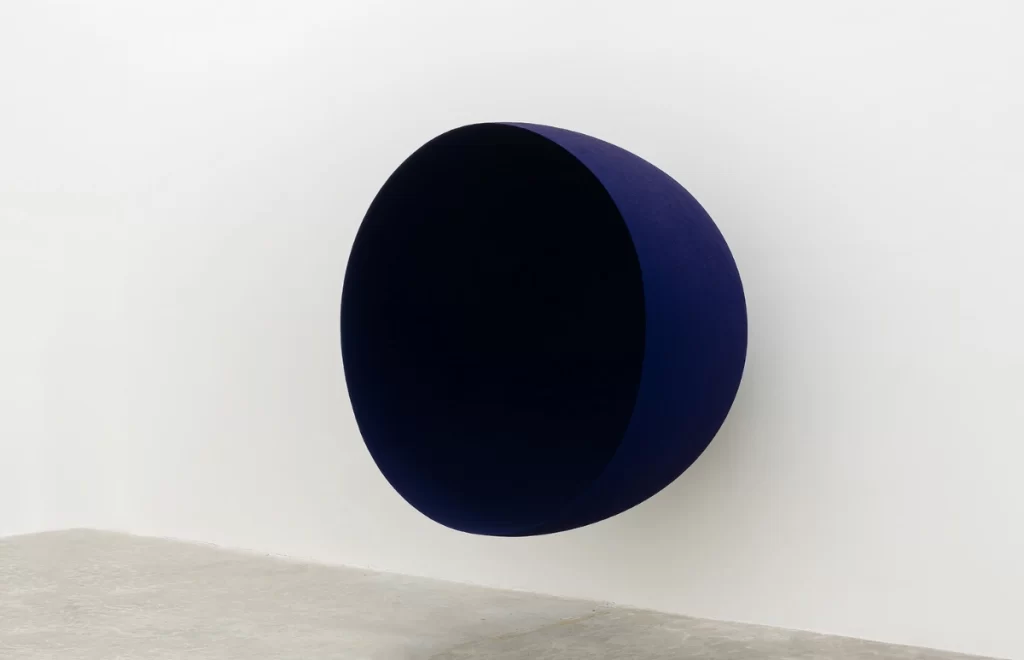
Courtesy – Oliver Santana
Image Courtesy – The New Yorker





